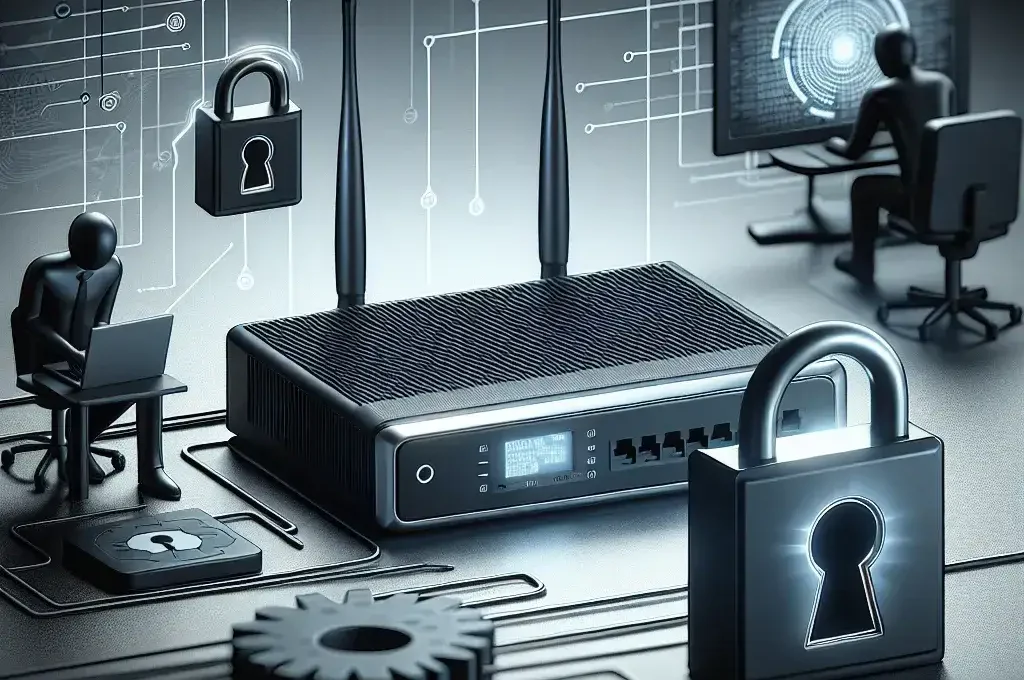Routers are essential devices in modern homes and offices, serving as gateways to the internet and enabling multiple devices to connect seamlessly. However, like any piece of network equipment, routers can be vulnerable to hacking, which can compromise your entire network’s security. In this article, we will explore whether routers can be hacked, the potential risks, and, importantly, how you can protect your router effectively.
Can a Router Be Hacked?
Yes, routers can be hacked. Hackers can exploit vulnerabilities within your router’s firmware, weak passwords, outdated software, and insecure configurations. Router hacking can lead to a variety of issues, including data theft, unauthorized access to your network, and botnet attacks.
| Security Risk | Description |
|---|---|
| Firmware Vulnerabilities | Exploitable bugs and flaws in the router’s software. |
| Weak Passwords | Easy-to-guess or default passwords can be exploited. |
| Outdated Software | Older firmware may have unpatched security holes. |
| Insecure Configurations | Poor settings that leave the router exposed. |
Common Methods of Router Hacking
1. Exploiting Firmware Vulnerabilities
Firmware vulnerabilities are a common exploit point for hackers. Many users forget to update their router’s firmware, which can leave them open to known security flaws. Hackers can exploit these to gain control over the router.
2. Deploying Malware
Malware designed to target routers can be used to change settings, redirect traffic, and steal sensitive data. This type of malware can infect your router through phishing attacks or after visiting compromised websites.
3. DNS Hijacking
DNS hijacking involves altering the settings of your router to redirect your internet traffic to fraudulent websites. This can lead to information theft and other malicious activities.
How Can I Protect My Router?
To safeguard your router from potential threats, follow these essential tips:
1. Change Default Login Credentials
The first step in securing your router is to change the default login credentials. Default usernames and passwords are widely known and can be easily exploited by hackers. Ensure you set a unique, strong password that combines letters, numbers, and special characters.
2. Keep Firmware Updated
Regularly updating your router’s firmware ensures you have the latest security patches. Check the manufacturer’s website or router settings periodically to ensure you are running the most up-to-date firmware.
3. Enable WPA3 Encryption
Wi-Fi Protected Access (WPA) encryption secures your wireless network by encrypting data transmitted between devices. If available, opt for WPA3, the latest and most secure version of this protocol.
4. Disable Remote Management
Disabling remote management features on your router can prevent unauthorized access. Remote management allows you to access your router’s settings from a different location, but it also exposes it to potential attacks if not secured properly. Turn this feature off if you do not need it.
5. Use a Strong Wi-Fi Password
Ensure your Wi-Fi network is protected by a strong, unique password. Avoid using predictable passwords and change them periodically. This will make it difficult for unauthorized individuals to access your network.
6. Enable Network Firewalls
Both your router and your devices should have firewall protection enabled. Firewalls act as a barrier to prevent unauthorized access to your network.
7. Disable WPS
Wi-Fi Protected Setup (WPS) is a convenient feature for connecting new devices to your network but can be exploited by hackers. To improve security, disable WPS in your router’s settings.
8. Monitor Connected Devices
Regularly check which devices are connected to your network. If you notice any unfamiliar devices, investigate and take action to block unauthorized access.
9. Use a VPN
A Virtual Private Network (VPN) can add an additional layer of security by encrypting your internet traffic. This makes it more difficult for hackers to intercept data and gain access to your network.
10. Segment Your Network
Consider segmenting your network into separate zones for different types of devices. For example, you can have a separate network for IoT devices, which are often less secure, and another for personal devices. This way, if one segment is compromised, the others remain secure.
Conclusion
While routers can indeed be hacked, taking proactive measures can significantly improve your network’s security. By changing default credentials, keeping firmware updated, and implementing robust security practices, you can protect your router from unauthorized access and potential attacks. Stay vigilant and regularly review your network settings to ensure the best possible protection against hacking attempts.

